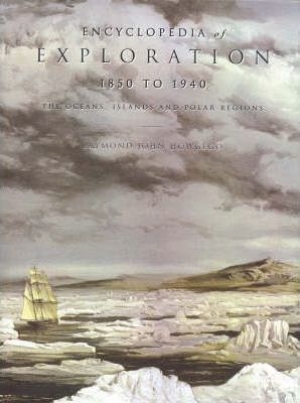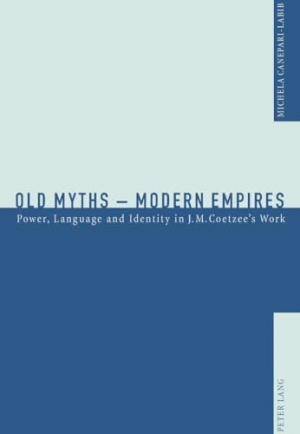Review
Vivian Smith reviews ‘David Campbell: Hardening of the light: selected poems’ edited by Philip Mead
David Campbell published a dozen volumes of poetry between 1949 and his death in 1979, as well as joint selections of Russian translations, collections of short stories and anthologies. Perhaps the purest lyricist of his time, he remained faithful to the few literary forms – the ballad, the song, the sonnet – that first engaged his attention, and never tried to force his range beyond its limits. There was no verse novel, no historical narrative, no extended satires or epistles. But he was not unresponsive to the debates that enlivened Australian literary discussion during his lifetime: A.D. Hope’s advocacy of the discursive mode finds its influence on one phase of his work, as does a highly individual use of neoclassical references. His short poems explore the whole range of Australian history from a variety of angles and, for all their brief and fragmentary forms, build up a narrative that is just as impressive as some of the more popular sequences of the 1940s. In the 300 pages of his Collected Poems (1989), not many go over the page. His poems might seem small in scale, but his collected work has a greater impact than that of many of his more ambitious, heavyweight contemporaries.
... (read more)Ian Morrison reviews ‘Encyclopedia of Exploration, 1850–1940: The oceans, islands and polar regions’ by Raymond John Howgego
When does an explorer become an adventurer, an adventurer a traveller, a traveller a tourist? This third volume of Raymond Howgego’s monumental Encyclopedia of Exploration moves into a period when the lines become increasingly blurred.
Volume One (2003) covered all of human history up to 1800. In that period, any traveller who left a written account of his or her journey could be counted as an ‘explorer’, and Howgego’s sheer stamina in seeking them all out made this one of the extraordinary books of our time. Most reference works of this scale are assembled by small armies of writers, researchers and editors, funded by major international publishers. The Encyclopedia of Exploration to 1800 was the work of one man, supported by the comparatively modest resources of Sydney antiquarian bookseller and boutique publisher, Hordern House.
... (read more)Isobel Crombie reviews ‘Faces of the Living Dead: The belief in spirit photography’ by Martyn Jolly
Photography has always had a close relationship with death, indeed one of the more poignant catch cries of early portrait photography exhorted clients to ‘secure the shadow, before the substance fade’. An intriguing part of this emotionally charged territory is spirit photography – a sub-culture of photographs from the mid-nineteenth to early twentieth centuries that purport to show ectoplasms, ghosts and auras of the dearly departed.
... (read more)Rebecca Starford reviews ‘UTS Writers’ Anthology: Making Tracks’
Making Tracks is the latest collection of poems, short stories and experimental prose by students in the prestigious writing courses at the University of Technology, Sydney. The anthology covers the themes of loss, love and self-discovery, often confronting the writers’ personal experiences from childhood and adolescence. These are tales of spiritual and actual travel within Australia and abroad, of rites of passage and of quests for identity.
... (read more)Gillian Dooley reviews ‘Old Myths: Modern empires: power, language and identity in J.M. Coetzee’s work’ by Michela Canepari-Labib
Michela Canepari-Labib is an Italian scholar of English literature and cultural theory. In Old Myths: Modern Empires, she sets out to map J.M. Coetzee’s work onto the major cultural theories of the twentieth century. Coetzee is just as familiar as she with the theories, and no doubt they have had their influence. But anyone can write novels based on Freud and Lacan: what is missing from Canepari-Labib’s account is everything that makes Coetzee worth reading.
... (read more)Jay Daniel Thompson reviews ‘Narrative and Media’ by Helen Fulton
Narrative and Media provides a lengthy and extensively researched overview of one of the central features of contemporary popular culture. The four authors (all of whom have been scholars at Sydney University) discuss the roles that narrative has played in mediums such as television, cinema and radio. In the introductory chapter, the authors explain the importance of their topic: ‘In a world dominated by print and electronic media, our sense of reality is increasingly structured by narrative.’ Later chapters address issues such as ‘narrative time’, ‘print news as narrative’, and the impact upon narrative conventions of postmodern and post-structuralist thought. In doing this, the authors also provide a ‘consideration of industry-related issues that affect the production and consumption of media texts’.
... (read more)Mark Peel reviews ‘Ordinary People’s Politics: Australians talk about life, politics, and the future of their country’ by Judith Brett and Anthony Moran
Of late there has been a good deal of agitated conversation about the political attitudes of ordinary Australians. As Judith Brett and Anthony Moran point out in this compelling new book, this has often taken the form of a ‘war of words within the political élites’, with the right using its supposed empathy for everyday people as a weapon against intellectuals, and the left blaming the deficiencies of John Howard’s Australia on the narrow-minded selfishness of ordinary voters. As it is, those of us who live in ordinary outer suburbs can hardly open Melbourne’s Age newspaper without finding ourselves accused of something, from a new Australian ugliness and the death of manners to the decline of civilisation. Mind you, the thought of being spoken for by anything-but-ordinary people like Janet Albrechtsen is even more distasteful.
... (read more)Dan Toner review ‘The Champions: Conversations with great players and coaches of Australian football’ by Ben Collins
In the wake of another season gone begging for many, it is stabilising and somewhat corrective to immerse oneself in the wisdom of some of Australian Rules’s greatest exponents, as collected here by Ben Collins. These men, mostly ex-players, have obviously thought deeply about the game since they left it, and have examined their lives for what it truly meant to them. What emerges is a catalogue of dedication, sacrifice, perseverance and gratefulness, a testimony to the power of passion. Legend after legend offers a glimpse of the possibilities that committing to a dream can awaken, a lesson that is not confined to aspiring footballers. Having said that, there are many pearls here for young men entering the game, the demographic that will probably benefit most from reading The Champions.
... (read more)Lawrence Alloway observed that Abstract Expressionism was the creation of middle-aged artists and not an avant-garde. Jackson Pollock was in his mid-thirties and already a considerable painter when he laid a canvas on the floor and began to swing paint on a stick. Willem de Kooning and Barnett Newman were in their forties before they found their signature styles. For twenty years, those painters explored a variety of styles and thoughtfully drifted towards individual expression; yet the change, when it came, seemed to pounce into their art rather than extend neatly from the preparation. The case was similar with Tony Tuckson.
... (read more)Alan Atkinson reviews 'A History of New South Wales' by Beverley Kingston
This book has one of the most beautiful covers you could hope to see: a Margaret Preston woodcut of Sydney Harbour, in rich blue, scarlet and ivory. Nor does the inside disgrace the exterior. It is a long time since anyone attempted a history of New South Wales, more than a century according to the blurb, presumably a reference to T.A. Coghlan’s annual publication, The Wealth and Progress of New South Wales, the last edition of which appeared in 1901. Beverley Kingston is highly qualified to do the job, and the twentieth-century detail is especially good.
... (read more)







